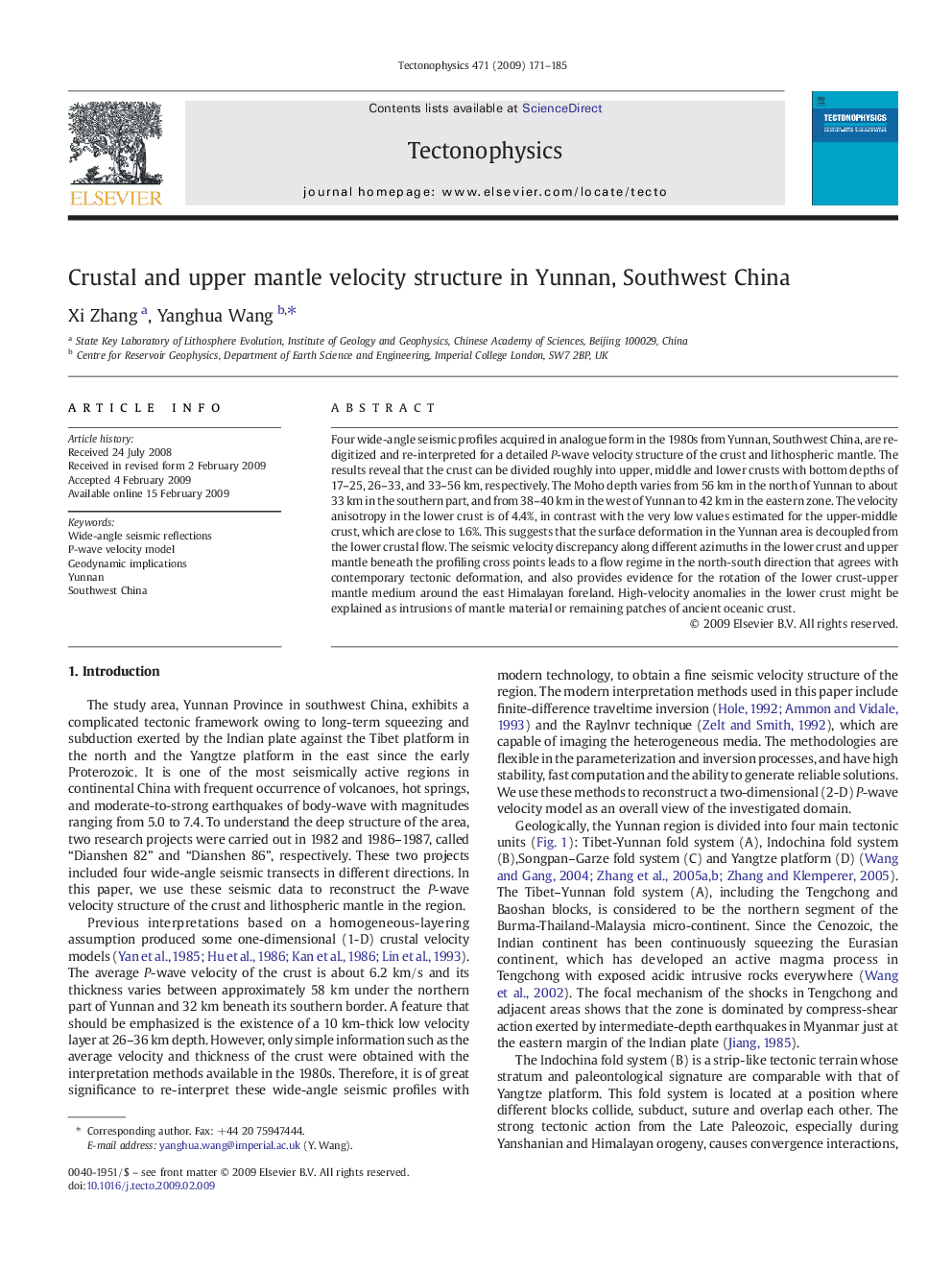| Article ID | Journal | Published Year | Pages | File Type |
|---|---|---|---|---|
| 4693802 | Tectonophysics | 2009 | 15 Pages |
Four wide-angle seismic profiles acquired in analogue form in the 1980s from Yunnan, Southwest China, are re-digitized and re-interpreted for a detailed P-wave velocity structure of the crust and lithospheric mantle. The results reveal that the crust can be divided roughly into upper, middle and lower crusts with bottom depths of 17–25, 26–33, and 33–56 km, respectively. The Moho depth varies from 56 km in the north of Yunnan to about 33 km in the southern part, and from 38–40 km in the west of Yunnan to 42 km in the eastern zone. The velocity anisotropy in the lower crust is of 4.4%, in contrast with the very low values estimated for the upper-middle crust, which are close to 1.6%. This suggests that the surface deformation in the Yunnan area is decoupled from the lower crustal flow. The seismic velocity discrepancy along different azimuths in the lower crust and upper mantle beneath the profiling cross points leads to a flow regime in the north-south direction that agrees with contemporary tectonic deformation, and also provides evidence for the rotation of the lower crust-upper mantle medium around the east Himalayan foreland. High-velocity anomalies in the lower crust might be explained as intrusions of mantle material or remaining patches of ancient oceanic crust.
